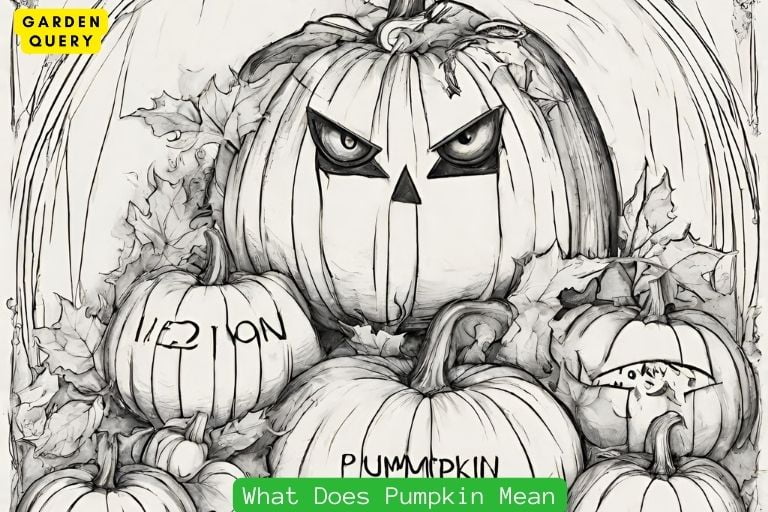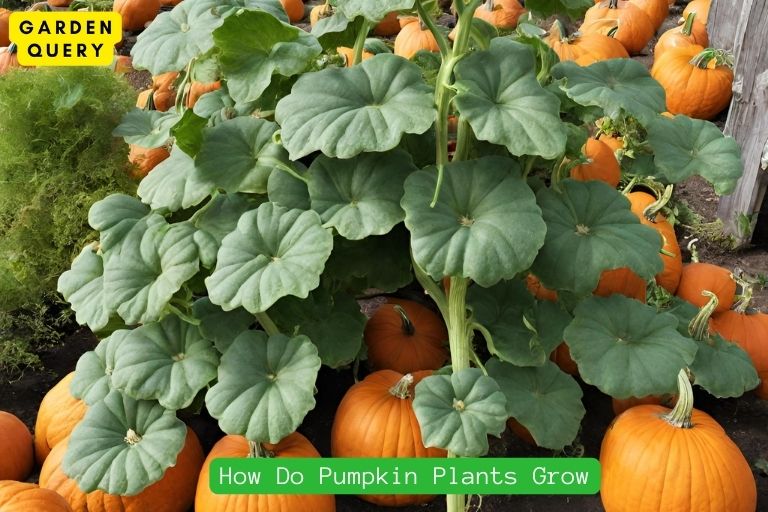Can Pumpkin Go Bad?
Yes, pumpkin can go bad, especially when not stored properly, leading to changes in texture, flavor, and potential microbial growth.
While pumpkin is a durable vegetable, improper storage conditions can cause it to spoil. Exposure to air and moisture can accelerate the deterioration process, causing changes in texture, flavor, and color. Mold growth is a common sign of pumpkin spoilage, and it’s crucial to discard any pumpkin showing such signs.
Refrigeration slows down the spoilage process, but freezing is the most effective method for long-term preservation. By understanding the signs of spoilage and implementing proper storage techniques, you can prolong the freshness of your pumpkin.
Key Takeaway
Pumpkin Go Bad
Factors that contribute to the spoilage of pumpkins
Pumpkins are a popular fall staple, used for carving jack-o’-lanterns, making delicious pies, and adding festive decor to homes. However, like any perishable food, pumpkins can go bad. Understanding the factors that contribute to their spoilage can help you determine if your pumpkin is still good to use or if it’s time to toss it out.

1. Age
The age of a pumpkin is one of the main factors that determine its freshness. As pumpkins age, they become softer and more prone to rotting. If you’re unsure about the age of your pumpkin, look for signs of shriveling or mold, which can indicate that it’s past its prime.
2. External Damage
External damage to a pumpkin, such as cuts or bruises, can accelerate the spoilage process. These damaged areas provide an entry point for bacteria and fungi, leading to the development of mold or rot.
3. Exposure to Moisture
Moisture is another factor that can contribute to the spoilage of pumpkins. Excess moisture can cause the pumpkin to become moldy or develop soft spots. It’s important to store your pumpkins in a dry and cool environment to minimize the risk of spoilage.
Signs of a bad pumpkin and how to identify them
1. Mold
One of the most common signs of a bad pumpkin is the presence of mold. Mold can appear as green, white, or gray fuzzy patches on the surface of the pumpkin. If you notice mold growth, it’s best to discard the pumpkin as consuming moldy food can be harmful.
2. Soft spots
If your pumpkin feels mushy or has soft spots when you press on it, it’s a clear sign that it’s gone bad. These soft spots indicate that the pumpkin is decomposing from the inside and is no longer safe to use.
3. Foul odor
A bad pumpkin may emit a foul odor, similar to that of rotting food. If you detect an unpleasant smell coming from your pumpkin, it’s best to dispose of it.
4. Discoloration
Discoloration can also be an indicator of a bad pumpkin. If you notice dark, wet spots or patches of discoloration on the pumpkin, it’s likely that it’s started to rot.
5. Bugs or pests
If you find bugs or signs of pest infestation on your pumpkin, it’s a clear indication that it’s gone bad. Bugs and pests can accelerate the spoilage process and may pose health risks if consumed.
To ensure the longevity of your pumpkins, it’s important to store them properly. Keep them in a cool, dry place, away from direct sunlight. If you plan to use the pumpkin for cooking or baking, it’s best to refrigerate it to extend its shelf life.
In conclusion, pumpkins can go bad due to various factors such as age, external damage, and exposure to moisture. Mold, soft spots, foul odor, discoloration, and bugs or pests are clear signs of a bad pumpkin. By being aware of these signs and practicing proper storage methods, you can make the most out of your pumpkin and enjoy it before it spoils.
How to Store Pumpkins
As the fall season arrives, pumpkins become a popular decoration and ingredient in various dishes. But if you don’t use them right away, you may wonder: can pumpkins go bad? The answer is yes, pumpkins can go bad if not stored properly. Here are some tips on how to store pumpkins to ensure their freshness and longevity.
Optimal storage conditions for pumpkins
To maximize the shelf life of your pumpkins, it’s important to store them under the right conditions. Here are the optimal storage requirements for pumpkins:
- Temperature: Pumpkins prefer cool temperatures between 50-55°F (10-13°C). Avoid exposing them to extreme heat or freezing temperatures, as this can cause them to spoil quickly.
- Humidity: Pumpkins thrive in a moderately humid environment of around 50-70%. High humidity can lead to the growth of mold, while low humidity can cause the pumpkins to dry out and shrivel.
- Ventilation: Proper air circulation is crucial to prevent mold and maintain the freshness of pumpkins. Place them in a well-ventilated area, such as a cool basement or pantry.
- Light: Pumpkins should be stored in a dark place. Exposure to direct sunlight can cause them to deteriorate rapidly.
Tips for prolonging the shelf life of pumpkins
To extend the shelf life of your pumpkins and minimize the risk of spoilage, follow these tips:
- Inspect for damage: Before storing your pumpkins, check for any signs of damage or rot. Discard any pumpkins with soft spots or mold to prevent the spread of decay.
- Handle with care: Avoid dropping or mishandling pumpkins, as this can cause bruising and accelerate deterioration.
- Store separately: Keep pumpkins separate from other fruits and vegetables. Some produce releases ethylene gas, which can speed up the ripening process and cause pumpkins to spoil.
- Don’t wash before storage: It’s best to refrain from washing pumpkins before storing them. Moisture can promote the growth of mold and bacteria, so it’s better to clean them just before use.
- Rotate regularly: If you have multiple pumpkins, rotate them periodically to ensure even exposure to air and prevent any areas from becoming too moist or dry.
- Check for freshness: Regularly inspect your stored pumpkins for any signs of spoilage. Look for changes in color, texture, or unpleasant odors. If they have started to go bad, it’s best to discard them immediately.
By following these storage tips, you can enjoy fresh and healthy pumpkins for a longer period. Whether you plan to carve them into jack-o’-lanterns or use them in your favorite recipes, properly stored pumpkins will add delightful autumn flavor to your festivities.
How to Preserve Pumpkins
If you love the taste of pumpkin and want to enjoy it all year round, proper preservation is key. Pumpkins can go bad if not stored or prepared correctly. This article will guide you through various preservation methods and provide a step-by-step guide to freezing pumpkins and making pumpkin puree.
Various preservation methods for pumpkins
- Storing whole pumpkins: The first method is to store whole pumpkins in a cool, dry place. Make sure the pumpkins are fully mature and have a hard skin. Avoid storing pumpkins near fruits or vegetables that release ethylene gas, as this can speed up the ripening process.
- Canning pumpkin: Canning is a popular preservation method that can extend the shelf life of pumpkin. Start by washing and peeling the pumpkins, then cut them into small cubes. Boil the pumpkin cubes until they become soft. Place the cooked pumpkin into sterilized canning jars and cover them with a syrup or liquid of your choice. Process the jars in a pressure canner according to the manufacturer’s instructions.
- Making pumpkin puree: Pumpkin puree is a versatile ingredient that can be used in various recipes. To make pumpkin puree, start by washing the pumpkin and cutting it into smaller pieces. Remove the seeds and stringy parts. Bake the pumpkin pieces in the oven until they become tender. Let them cool, then scoop out the flesh and blend it until smooth. Store the puree in airtight containers or freezer bags.
Step-by-step guide to freezing pumpkins and making pumpkin puree
- Select a mature, healthy pumpkin with a firm skin.
- Wash the pumpkin thoroughly to remove any dirt or debris.
- Cut the pumpkin in half and remove the seeds and stringy parts using a spoon or scoop.
- Cut the pumpkin into smaller, manageable pieces.
- Preheat the oven to 350°F (175°C).
- Place the pumpkin pieces on a baking sheet lined with parchment paper.
- Bake the pumpkin for about 45 to 60 minutes, or until the flesh is soft and easily pierced with a fork.
- Remove the pumpkin from the oven and let it cool.
- Once cooled, scoop out the flesh and transfer it to a blender or food processor. Blend until smooth.
- Divide the pumpkin puree into desired portions and transfer them to airtight containers or freezer bags. Label them with the date and freeze.
- When using the frozen pumpkin puree, thaw it in the refrigerator overnight or defrost using the microwave.
By following these preservation methods and the step-by-step guide to freezing pumpkins and making pumpkin puree, you can enjoy the taste of pumpkin throughout the year. Remember to always use proper storage containers and label them correctly to ensure the best quality.
Pumpkin Recipes
Delicious pumpkin recipes to use up your excess pumpkins
If you find yourself with an abundance of pumpkins after Halloween or Thanksgiving, don’t let them go to waste! Pumpkins are not only great for carving into jack-o’-lanterns, but they also make for delicious and nutritious ingredients in a variety of recipes. Here are some mouthwatering ideas to help you make the most of your excess pumpkins:
- Pumpkin Soup: Warm up with a creamy and comforting bowl of pumpkin soup. Roast the pumpkin, blend it with vegetable broth, spices, and cream for a hearty soup that is perfect for chilly autumn evenings.
- Pumpkin Pie: A classic Thanksgiving dessert, pumpkin pie is a must-try recipe. With a buttery crust and a rich, spiced pumpkin filling, it’s a crowd-pleaser that will leave everyone craving for more.
- Pumpkin Bread: Bake a loaf of moist and flavorful pumpkin bread that is perfect for breakfast or a tasty snack. Add your favorite nuts or chocolate chips for an extra crunch or sweetness.
- Pumpkin Pasta: Get your pasta fix with a twist by making pumpkin pasta. Combine cooked pasta with a creamy pumpkin sauce, seasoned with garlic, herbs, and parmesan cheese for a comforting and satisfying meal.
- Roasted Pumpkin Seeds: Don’t throw away those pumpkin seeds! Roast them with olive oil, salt, and your favorite spices for a crunchy and addictive snack. You can enjoy them on their own or sprinkle them over salads, soups, or roasted vegetables.
Creative ways to incorporate pumpkin into your meals and desserts
- Pumpkin Pancakes: Start your day off right with fluffy and flavorful pumpkin pancakes. Top them with maple syrup and a dollop of whipped cream for an extra indulgent treat.
- Pumpkin Hummus: Give your hummus a seasonal twist by adding roasted pumpkin puree to the classic recipe. Pair it with pita bread, vegetables, or crackers for a delicious and healthy snack.
- Pumpkin Smoothie: Blend together pumpkin puree, banana, milk, and your favorite spices to create a creamy and nutritious pumpkin smoothie. It’s a great way to sneak in some extra vitamins and fiber into your diet.
- Pumpkin Curry: Spice up your dinner routine with a flavorful pumpkin curry. Combine pumpkin chunks with aromatic spices, coconut milk, and vegetables for a satisfying and aromatic dish.
- Pumpkin Cheesecake: Indulge in a decadent pumpkin cheesecake that combines the creamy goodness of a classic cheesecake with the rich flavors of pumpkin. It’s the perfect dessert to celebrate the fall season.
Whether you’re looking for comforting soups, delightful desserts, or unique savory dishes, pumpkins have got you covered. Don’t let those excess pumpkins go to waste – get creative in the kitchen and enjoy the delicious flavors of this versatile ingredient.
- Best Therapists In Dallas - February 1, 2024
- Holly Willoughby Husband: Holly Willoughby’s Love Story - January 30, 2024
- Holly Willoughby Dress: 5 Style Secrets and 7 Must-Know Career Milestones - January 30, 2024





